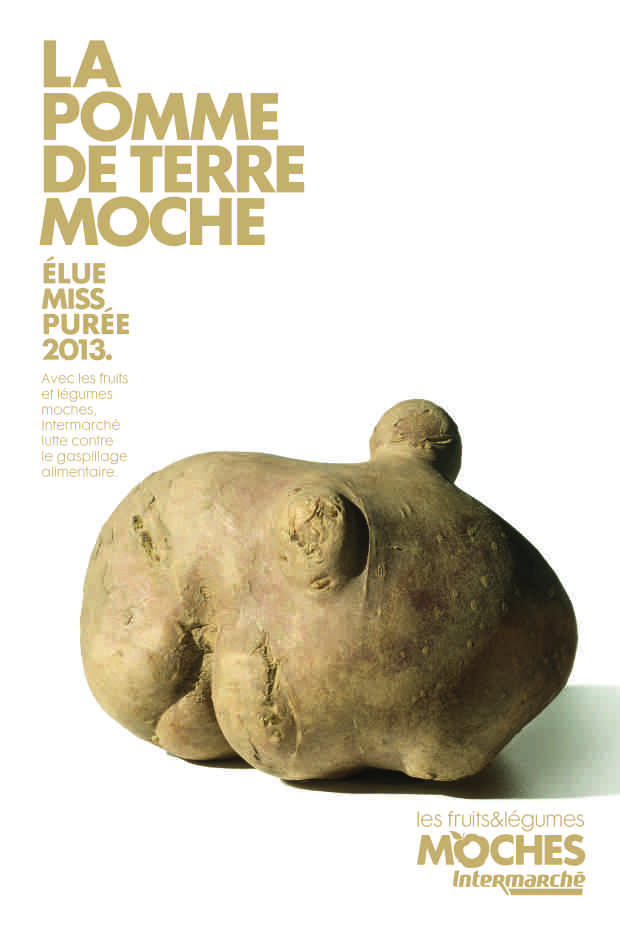In the 21st century, ugliness has triumphed on the catwalks, in ads, and even in food. Long live ugliness!
This fascination with ugliness is nothing new. Velázquez’s dwarves, Goya’s black paintings, Toulouse-Lautrec’s characters, brutalism in architecture, the avant-garde of the 20th century, kitsch or camp. Art has embraced ugliness as an expressive language throughout history. In the 21st century, this fascination has spread from ugly fashion to many other fields. We can also see the influence of the Japanese philosophy of Wabi-Sabi in this trend, which is based on knowing how to find beauty in imperfection.

Ugly fashion: is fashion getting ugly?
The big fashion houses have always played with surprising combinations and a certain element of ugliness. For example, there was Prada and their socks with sandals and Gucci’s tracksuit with high heels. However, in the last few years, they have gone a step further, breaking with long-held principles by presenting bizarre ideas, like the platform Crocs by Balenciaga. The luxury brand also did something similar this year with their Croc-like stilettos, bringing to mind Barbie’s shoes.
What we weren’t expecting was that these examples of eccentricity would go from the catwalk to the streets, but it seems that they are here to stay. For some, ugly fashion, such as the trend of wearing grandma’s dresses, is a victory for feminism, freeing women from having to always be an object of male desire: it’s a triumph of comfort over sexy. Is this a new standard of beauty in the fashion world?

Ugly models…or real women
Until recently, if your two front teeth were separated, you would correct this with braces. But following the success of models and actresses that have this quirk, such as Madonna, Vanessa Paradis, and Georgia Jagger, ways of actually creating this gap began to catch on.
Ears that stick out, bulging eyes, big noses. All of these “defects” people were teased about in school or that provoked compassionate looks from your friends can now be seen on the catwalks thanks to “imperfect” models like Molly Bair, Liza Ostanina, and Mash Tyelna. But fashion has gone one step further by incorporating models with features that are the result of health conditions: Winnie Harlow has raised awareness about vitiligo, and Melanie Gaydos, who has a disorder called ectodermal dysplasia which causes abnormal development in various parts of the body, has become world-famous. Nastya Zhidkova, who has albinism, and Mireia Mendoza, who is blind and deaf, are two more examples. All of these models are a reflection of the variety of real women who are looking at magazine covers.
However, taking a chance on imperfection is not always well-received. This was the case with Zara, who have been mired in controversy this year thanks to their campaign that featured Chinese model Jing Wen. Why was it controversial? Well the Chinese population considered her freckles, which are rare among Asian women, an offense to their culture, and they accused the brand of wanting to impose Western standards of beauty. It seems the Japanese spirit of Wabi-Sabi has not yet reached Chinese shores.
Ugly food: the taste of ugliness
You would be hard-pressed to find an example of a piece of fruit or a vegetable with imperfections at a supermarket because, as we all know, the “ugly” ones don’t sell. However, Misfits Market saw a way to take advantage of this love for ugliness. They help “fruit and vegetable misfits find a good home” by selling, via a subscription service, products that have been rejected by stores because of marks, lumps, or other imperfections. They aren’t the only ones: the French company Intermarché promotes “ugly” fruits and vegetables, while British company Asda sells them in their “wonky boxes”.
The rise of “ugly food” is closely related to greater environmental awareness, as its main goal is to reduce the 1.3 billion tonnes of food waste produced every year. “Ugly food” is not thrown away because it lacks nutritional quality, but rather because its appearance is less than ideal. Another advantage is how much you can save when shopping, as “flawed” products are sold at a lower price.
Ugly advertising: ugly sells
In the last few years, “shabby” ads have made their way from local tv channels to the internet, as big brands try to imitate the amateur video aesthetic. Advertising companies have realised that ugly sells, and have incorporated it into their campaigns. Tim Leake, Director of Marketing and Innovation at RPA, says calls it “ugly advertising” and says its purpose is to connect with people via new digital channels. The look and visual quality of an ad is no longer the most important thing for consumers who are asking for a new language that adapts to them: ads that don’t look like ads.
What other ugly success stories do you recommend?











